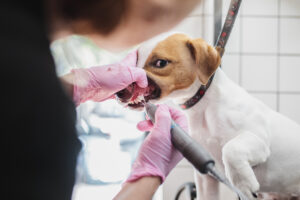Saying goodbye to a beloved pet is undeniably one of life’s most heart-wrenching experiences. As pet owners, we share an unbreakable bond with our furry companions, and the thought of their suffering is almost unbearable. When faced with the difficult decision of euthanasia, the desire to provide a peaceful and dignified farewell becomes paramount. Thankfully, at-home pet euthanasia has emerged as a compassionate alternative, allowing pets to transition in the comfort and familiarity of their own homes.
Understanding At-Home Pet Euthanasia
What is At-Home Pet Euthanasia?
At-home pet euthanasia is a service provided by specialized veterinarians who come to your residence to gently and peacefully end your pet’s life. This option circumvents the potential stress and anxiety that can arise from a visit to the veterinary clinic, especially for older or ailing pets. In the sanctuary of their own home, surrounded by familiar sights, smells, and loved ones, pets can experience a more tranquil and dignified passing.
The Euthanasia Process: A Gentle Transition
- The Initial Consultation: The journey begins with a comprehensive consultation with a veterinarian experienced in at-home euthanasia. During this visit, the veterinarian will assess your pet’s health, medical history, and overall quality of life. They will discuss your concerns, answer your questions, and explain the euthanasia process in detail. This open dialogue ensures that you are fully informed and can make a decision that aligns with your pet’s best interests.
- Preparing a Peaceful Environment: Prior to the procedure, you can create a serene and comforting ambiance for your pet. Choose a quiet area in your home where your pet feels most at ease. Consider dimming the lights, playing soft music, and surrounding your pet with their favorite blankets, toys, or even familiar scents. This familiar setting helps to alleviate any anxiety your pet may be experiencing.
- Sedation: A Gentle Slumber: In most cases, the veterinarian will administer a sedative to help your pet relax. This mild sedative induces a state of drowsiness, minimizing any discomfort or awareness of the subsequent steps. The goal is to ensure that your pet experiences a peaceful and pain-free transition.
- Euthanasia Medication: A Painless Farewell: Once your pet is deeply sedated, the veterinarian will proceed with the administration of the euthanasia medication. Typically, this is an intravenous injection of pentobarbital, a barbiturate that acts swiftly and painlessly to stop the heart. Your pet will simply drift off to sleep and peacefully pass away. The veterinarian will confirm that your pet has passed before discussing aftercare options.
- Aftercare: Honoring a Beloved Companion: After your pet has passed, the veterinarian will discuss aftercare arrangements with you. You can choose from various options, such as cremation (individual or communal), burial, or even creating a memorial for your pet. The veterinarian can guide you through these choices and help you make a decision that honors your pet’s memory.
Benefits of At-Home Pet Euthanasia
- Comfort and Familiarity: Your pet can spend their final moments in the comforting embrace of their own home, surrounded by familiar sights, smells, and the love of their family. This familiar environment minimizes stress and anxiety, allowing for a more peaceful passing.
- Reduced Stress and Anxiety: Eliminating the need for travel to a veterinary clinic is a significant advantage, especially for older or unwell pets. Travel can be stressful and exacerbate their discomfort.
- Privacy and Intimacy: At-home euthanasia offers a private and intimate setting for you and your family to say goodbye to your pet without the time constraints or potential distractions of a clinical environment.
- Personalized Experience: You can tailor the experience to your pet’s specific needs and preferences. You can choose the music, lighting, and even the location within your home to create a truly personalized farewell.
- Unhurried Farewell: In your own home, you have the freedom to spend as much time as you need with your pet before, during, and after the procedure. There is no rush, allowing you to grieve and process your emotions at your own pace.
Choosing a Veterinarian: A Compassionate Guide
Selecting a veterinarian who specializes in at-home euthanasia is of paramount importance. Seek recommendations from your regular veterinarian or research reputable providers in your area. Ensure the veterinarian you choose is compassionate, experienced, and willing to answer all your questions openly and honestly.
When to Consider At-Home Euthanasia
At-home euthanasia is a compassionate option when your pet is suffering from a terminal illness, a debilitating condition, or age-related decline that significantly impacts their quality of life. Your veterinarian can help you assess your pet’s condition and determine if at-home euthanasia is the most humane and appropriate choice.
In Conclusion
While the decision to euthanize a beloved pet is never easy, at-home euthanasia offers a peaceful and dignified way to say goodbye. It allows you to create a loving and comforting environment for your pet’s final moments, providing solace during a difficult time. By choosing at-home euthanasia, you can prioritize your pet’s comfort and ensure a gentle transition surrounded by love. Remember, you are not alone in this journey, and there are resources available to help you through the grieving process.
Get started today by joining the Truffle Paws family and embrace a worry-free pet parenthood journey.







